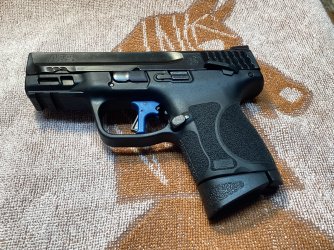The “best” 9mm handgun discussion got me thinking we should have shooters define what makes newer pistols better than more traditional designs with long histories of successful service. What criteria must be considered?
1) Advances in design?
There have certainly been some watershed moments in pistol design:
- The Luger in its 1901, 1902, 1906, and 1908 forms along with the 9mm Luger round were arguably the first truly practical and effective semi auto military pistol and cartridge.
The pistols ran like well oiled sewing machines but still lacked practicality. The cartridge itself was fine by military standards but hasn’t really come into its own until the 21st and the effectiveness of modern hollow points.
- The 1911 introduced a combination of features that have made it a practical combat, defensive, competition and plinking handgun. And have kept it popular for 113 years.
- The Walther PP in 1929, became the first practical DA/SA self defense pistol, and is still produced in its PPK (1931) and PPK/S (1968) versions. The DA trigger in a pistol was revolutionary for self defense purposes and the PP was a standard police pistol in many European countries for over 50 years.
- The Browning Hi Power in 1935 became the first successful double stack, high capacity magazine pistol. It was in many respects a refinement of the 1911 design, adding things it needed and deleting things it didn’t. Like the 1911 it is one of the most successful designs in history, and is still in production by multiple manufacturers.
- The Wonder Nines beginning with the HK VP70 in 1970 and the S&W Model 59 in 1971. The CZ-75 in 1975 and the Beretta 92 in 1976 are arguably the longest lasting and most successful of the original wonder nine pistols. Both are still produced and still have a loyal following. The Luger, 1911, PP, and Hi Power were all by themselves revolutionary. The Wonder Nines just combined the various positive attributes of each into a single handgun.
- The Glock 17 introduced in 1982 was certainly innovative. It has spawned legions of striker fired pistols that tie their safety devices to the trigger, and have trigger pulls somewhere in between long, heavy DA triggers and short, light SA triggers. The Glock was designed as a military handgun, but whether used in military service or police service it was a response to a need for simple operation and limited training. The Glock has certainly become popular due to its widespread law enforcement use, and shooters in the US like to use what law enforcement agencies use, even if the needs and specific purposes are apples to oranges comparisons.
2) Purpose?
Purpose often gets lost in the discussion. For example, many shooters looking for a concealed carry pistol are often influenced by the duty pistols law enforcement officers carry and continue to persist with the idea that it should offer high magazine capacity, even though that capacity is almost never required in an armed citizen self defense shoot - let alone the two spare magazines some of those folks insist on carrying.
Striker fired pistols like the Glock are also popular for concealed carry. That’s the case even though a design that ties all the safeties to the trigger and was intended for use in an OWB duty holster is a poor choice for IWB carry, unless it’s used in conjunction with a very carefully thought out and designed holster.
3) Fit
This one is glossed over all the time. Shooters will often choose a handgun because of authoritarian based arguments. Someone famous or someone they respect will says a particular handgun is “the best” and will buy it, even though it might not be the best fit for either their needs or their hands.
For example the Sig P365 series pistols are very popular concealed carry handguns and are arguably the best selling defensive handguns sold in the US currently. Yet none of them fit my hand properly. If I place my hand on the pistol properly and draw it the front sight will be hidden behind the left rear sight ear every time. I have to adjust my grip or move my wrist to align the sights every single time.
A properly fitting pistol will come up into your line of sight with the sights aligned or nearly aligned naturally. Over time and with some muscle memory those sights will be aligned near perfectly and sight alignment then takes care of itself learning you with jus the task of placing the front sight on target and completing the trigger pull without disturbing those sights.
Fit is far more important than brand or model number, but it’s something way too few shooters consider. And they throw lead all over and/or around the target because of it, especially under stress.
——-
In individual terms “best” will come down to your needs and intended use (which may well be shaped by, early on, authoritarian arguments, and as you mature and gain experience by a shooter by observation, experience, logic, and even philosophy. Fit also matters, and when shooting under extreme stress is arguably the single most important factor in getting rapid hits on target, although some shooters may never realize it.
In terms of a general issue pistol, those factors have to be met as well. The needs and intended use will be based on policy decisions. But for general issue the pistol has to be at least an acceptable fit for a wide range of hand sizes and proportions.
The 1911 and Hi Power both met that fit requirement really well as did the CZ-75 and the S&W 39. The Beretta 92 was a failure in that regard, and the Glock 17 was less than ideal.
Your thoughts?

